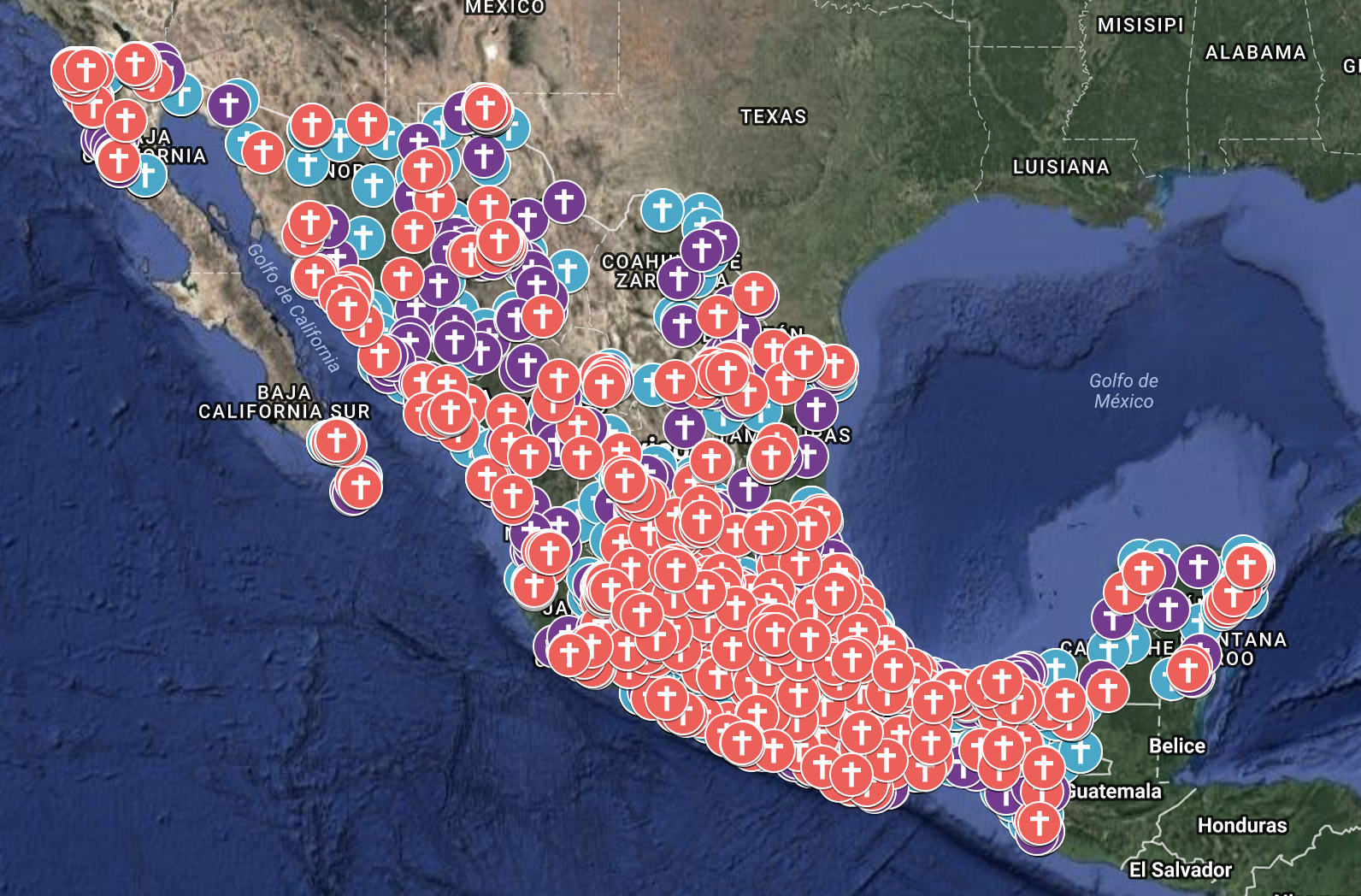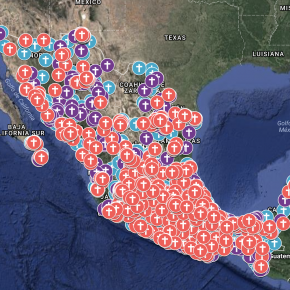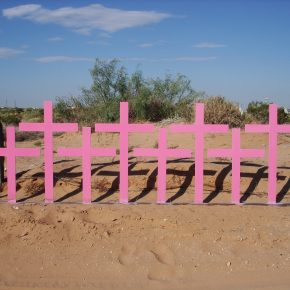
By Verónica Lira Ortiz
Monday, she was found mutilated inside a suitcase; her right hand was missing.
Tuesday, her face was unrecognizable; she had been drowned in acid.
Wednesday she laid between the bushes; she had been beheaded.
Thursday, she was found naked in a car trunk with clear signs of violence and abuse.
Friday, they took five months to find her; she was buried in the lowlands of a hill.
Saturday, the floor was covered in blood; her body had 22 needlestick injuries.
Sunday, a “gudia” is used to cut corn; he cut her throat.
Monday, she was wearing an orange tank top; she played football.
Tuesday, she went out for beers; she was graduating in a few months.
Wednesday, she still had her uniform on; she was studying nursing.
Thursday, her parents had to work that day; she was only 8.
Friday, she left home to work as a hostess; she was 18.
Saturday, she was watching TV alone; she was about to turn 20.
Sunday, she wanted him to help with the expenses; she loved her son.
[dropcap]T[/dropcap]he facts and the numbers are now engraved in my brain. I don’t know how or why but there they are, constantly reminding me that gender violence is a serious problem in my country. Every day in Mexico at least 7 women are murdered; every three minutes there is at least one woman who is sexually abused. So far this year, approximately 1,170 women have died at the hands of gender violence. Femicides in Mexico are not effectively persecuted and there is no unified legal framework; only half of these crimes are kept within the official governmental registries.
After spending a year away from home at Yale, I had become unaccustomed to reading and listening to the heartbreaking stories of the disappearances and murders of women all across Mexico. However, on July 11th, these stories were no longer just on the media, but in fact came closer to home. Five women were found dead in the state of Puebla in less than 72 hours, and one of them was just about to turn seventeen. She was my grandfather’s niece—in Mexico, we say sobrina-nieta—and in a way she was my distant cousin. I had never met her. I just knew her name and now she was gone. She was murdered in a vacant lot and found between the bushes, she was still wearing her uniform: a nurse’s uniform. For my aunts and uncles the pain is still unbearable. They keep asking questions which have no answer.They will never understand why she died, nor will I. Sadly, that’s the thing about femicides: they are crimes of gender violence. In other words, we get killed for being who we are: women.
Just ten days before my world was shook, Mexico celebrated one of its most historical elections ever. The newly elected administration announced that there would be gender parity within the cabinet and for the first time women would occupy posts like Secretary of State and Secretary of Economy. Quite exciting, don’t you think? This statement was accompanied with the news that Congress is also going to have the largest female body in Mexican history: the Chamber of Deputies will now be integrated with 243 women and 256 men, while the Senate will include 63 women and 65 men. I was immeasurably happy after hearing the news. Then, I started wondering whether this large female political empowerment would translate to improved laws to prevent gender violence (including femicides) and grant greater opportunities for women in my country. Perhaps, I thought; however, it is not an easy path towards equality and eliminating gender violence in Mexico. Women are still dying every single day and the problem is much more complex than it appears.
Mapping our deaths
As I scrolled down my Twitter feed, something caught my eye: a map that showed femicides all over Mexico. I immediately set off to contact its creator. María Salguero graduated as a geophysicist from the Polytechnic Institute of Mexico (IPN), but in 2016 she decided to put her skills with data analysis and mapping to a better use. She created two digital maps that daily track femicides all across Mexico. During President Calderón’s administration, Salguero started following nota roja and realized that many women were being murdered not only in places with high activity of the “War on Drugs,” but all around the country, including Mexico City, where femicides were practically invisible. “The country was falling apart so I felt I had to do something. If a problem like gender violence is on the rise, we have to be empathic with the victims and have access to real information. That is why I started documenting femicides through maps,” Salguero explained.
Salguero realized that many journalists and activists struggled to find data around gender crimes in Mexico, especially femicides. By using Google filters like “mujeres asesinadas,” “feminicidio,” “asesinato de mujer,” and“cadáver de mujer,” everyday Salguero receives hundreds of news articles and information about possible femicides and other violent crimes towards women. She then uploads these details to both of her maps to present the larger picture of gender violence in Mexico. Salguero uses different labels to classify and tippify registered femicides, including the victim’s name and age, relation to the murderer, legal details, type of weapon, place and time of death.
Since 2016, Salguero has registered over 6,000 femicides. It doesn’t come as a surprise that the Mexican Government has registered lower femicide rates. According to the Executive Secretariat for National Security (Secretariado Ejecutivo del Sistema Nacional de Seguridad Pública) or SESNSP, in the first four months of 2018, a total of 258 femicides were registered. Comparatively, Salguero had registered at least 700 more femicides. Why is there such a big difference in the data? First, we must acknowledge that there is no homologation of what crimes are considered as femicides and not intentional homicides.For the SESNSP, a femicide only happens when there is a family, labor, sentimental or scholarly relationship between the aggressor and the victim, as well as the existence of sexual violence, degrading injuries or mutilations, threats or kidnapping previous to the murder. Secondly, we must admit that not only are processes within the judicial system slow and weak, but in fact some authorities are incentivized to cover-up the real numbers and deny that Mexico has a problem which has slipped from their hands.
Femicidiosmx has become an important tool for journalists, activists, and academics for whom the data and information provided by governmental institutions is insufficient and does not display the full picture. Salguero’s maps have also caught the attention of politicians, some of which gave her the opportunity to present her project to the Mexican Senate. By doing this, the Commission for Equality and Gender presented new initiatives—such as the creation of a law to protect the children who lost their mothers to femicides—as well as created new research mechanisms to look into roles carried out in communities with high rates of gender violence. UN Women in Mexico has also become involved with the mapping of femicides, specifically in trying to avoid cases of human rights violations and torture.
Salguero’s work is a crucial effort towards eradicating gender violence in Mexico, and with a larger female presence in the newly elected administration, there is perhaps more hope to make things better. More laws, protocols and mechanisms inside government institutions must be created. Salguero has already impacted public policy making, but this alone is not enough, or is solely having more women involved with Mexican politics. “I think solutions must also be bottom-up. No matter how many laws or protocols are made inside Congress, crime scenes are still being contaminated, policemen and judges paid to lose evidence, and lawyers corrupted not to complete case files. These actions translate into impunity, which translates to zero punishments and a continuous cycle of violence,” Salguero explains.
***
There is no magic formula to eliminate femicides or to change Mexican society in the blink of an eye. However, acknowledging that there is a problem and that we are constantly threatened is a step towards eradicating gender violence. Women’s empowerment, including job placement, is key in doing so. Other actions should include: better access to health and legal institutions, perhaps through the creation of Crisis Centers, anti-machismo and sexual education, and the homologation of local and federal laws on gender violence.
Every four hours a woman in Mexico ceases to exist, a family is left heartbroken, a pile of dreams and hopes is shattered. If you still don’t believe me, just take a quick look at María Salguero’s map and remember that we are dying…
Verónica Lira Ortiz is a visiting international student in Branford College. Contact her at veronica.liraortiz@yale.edu.


